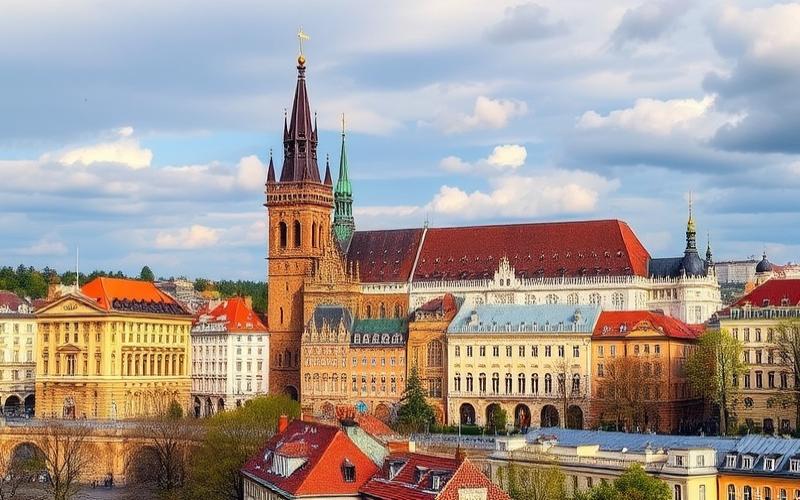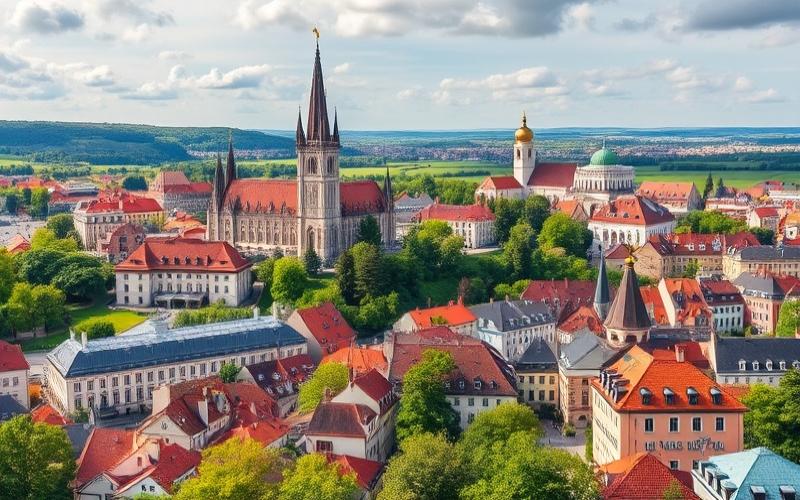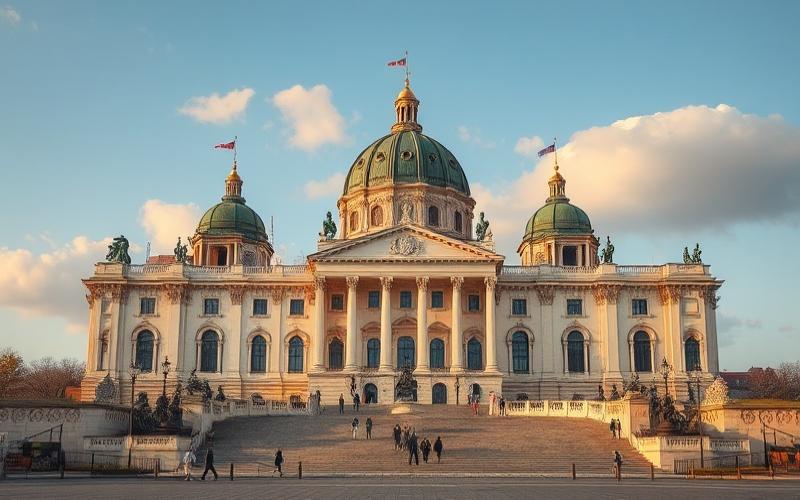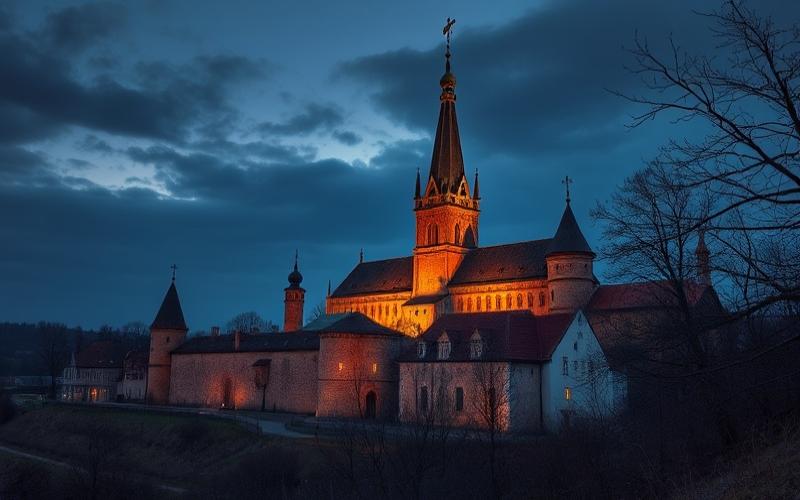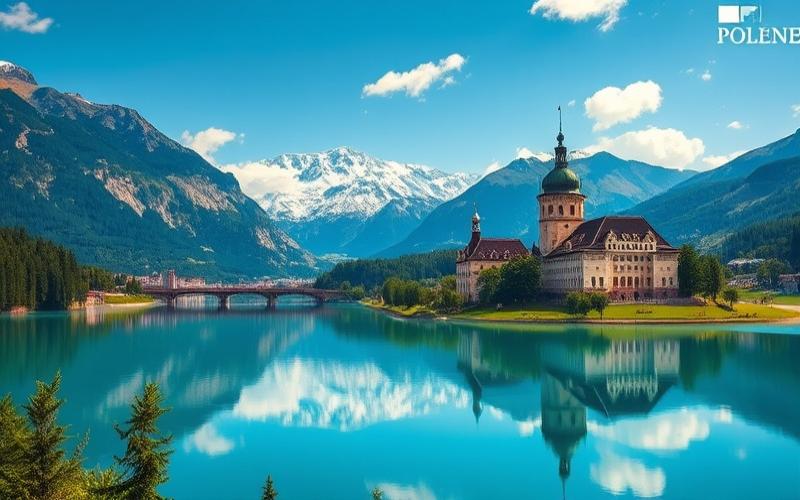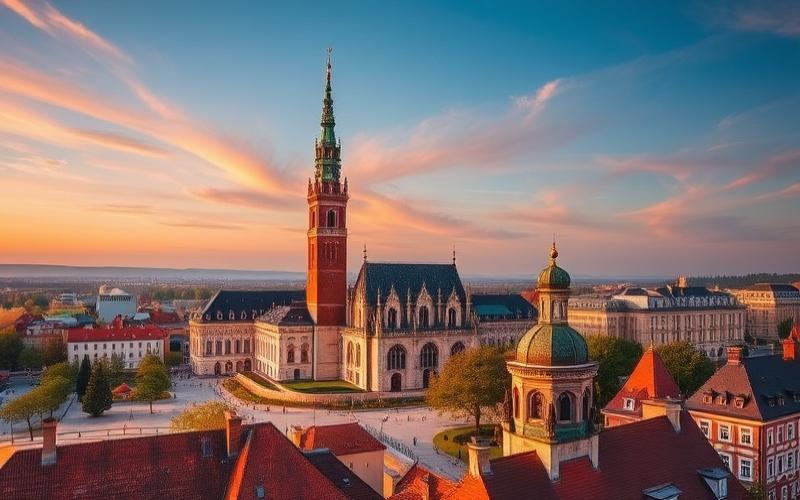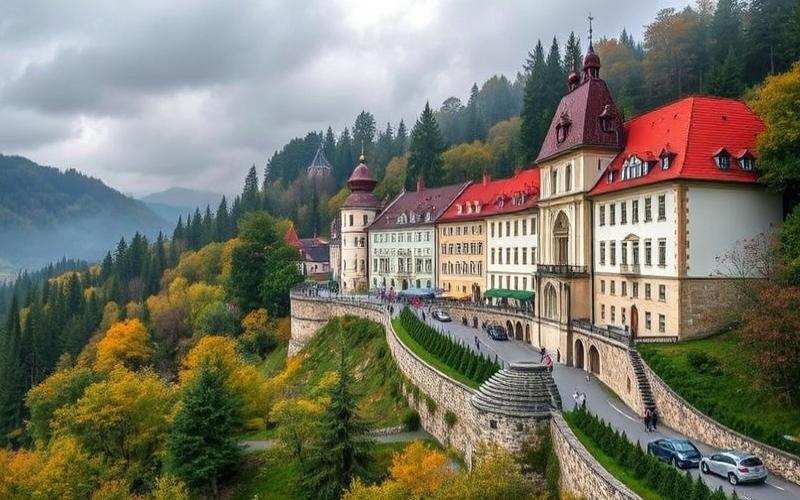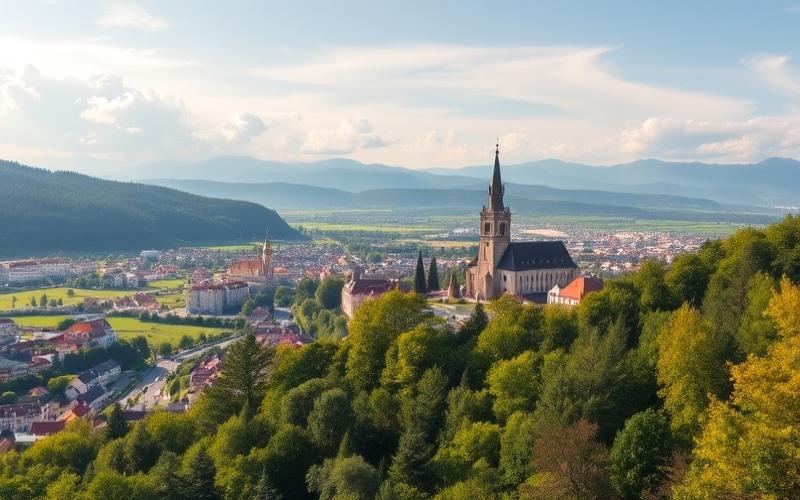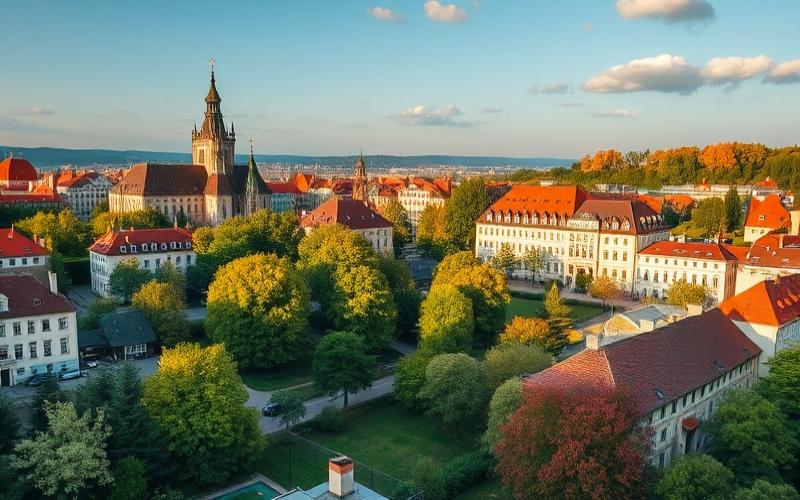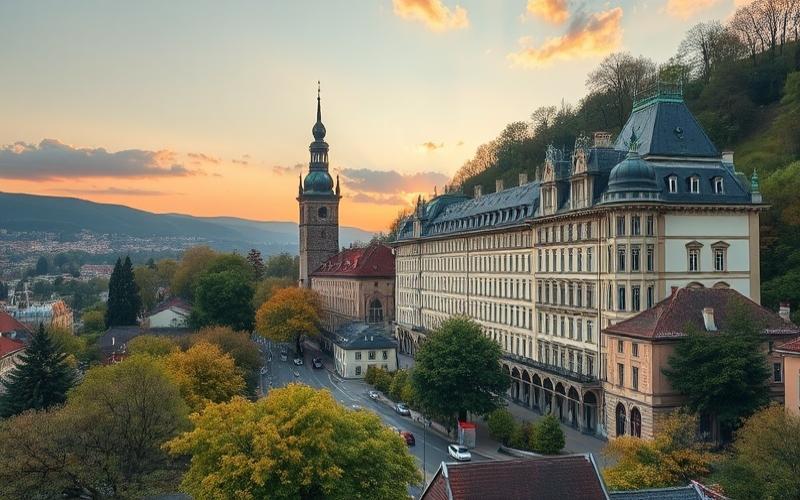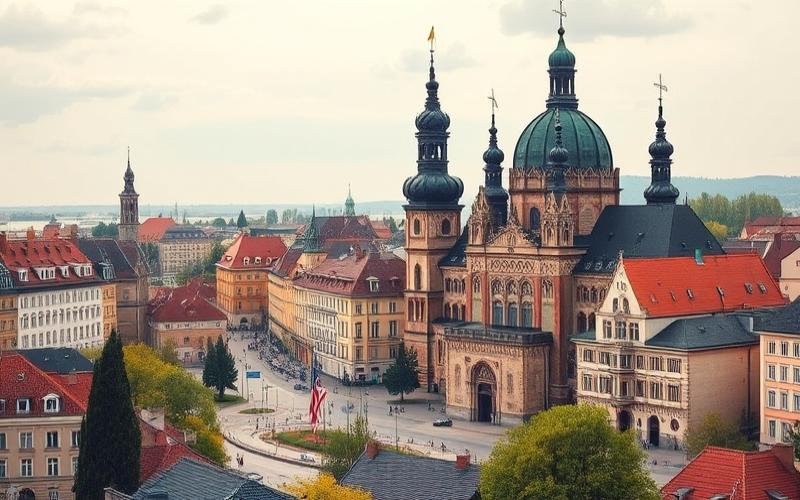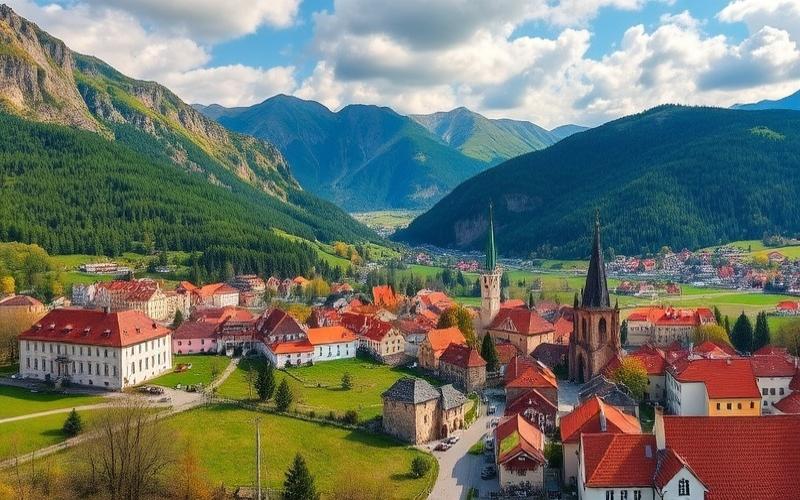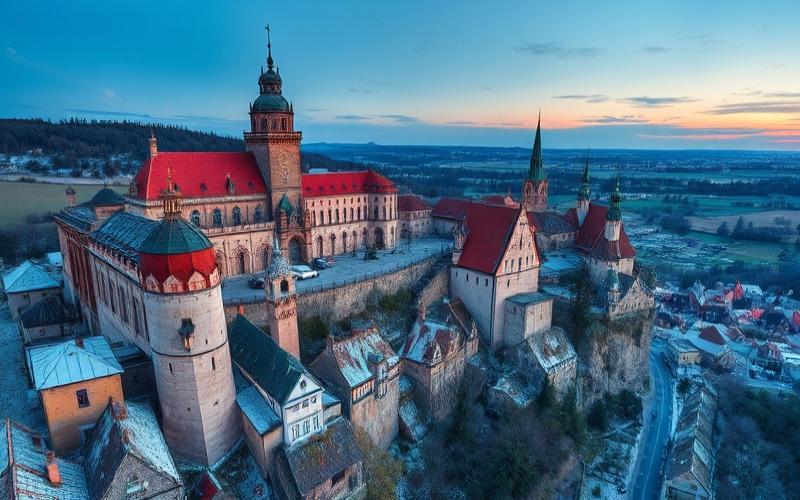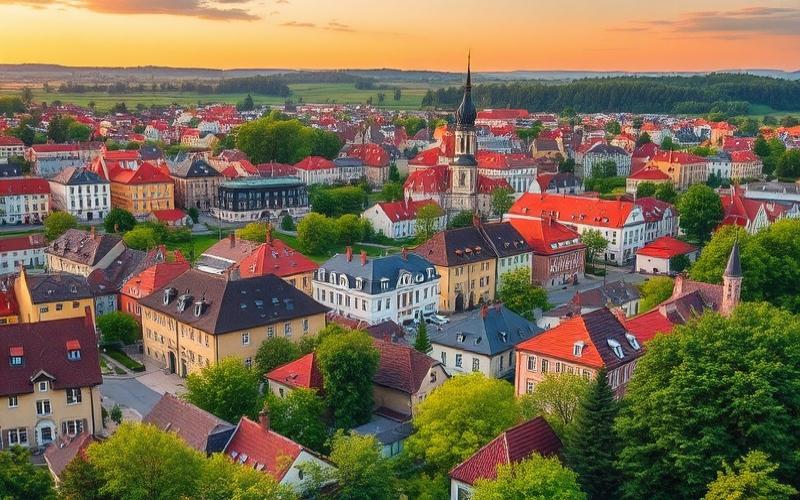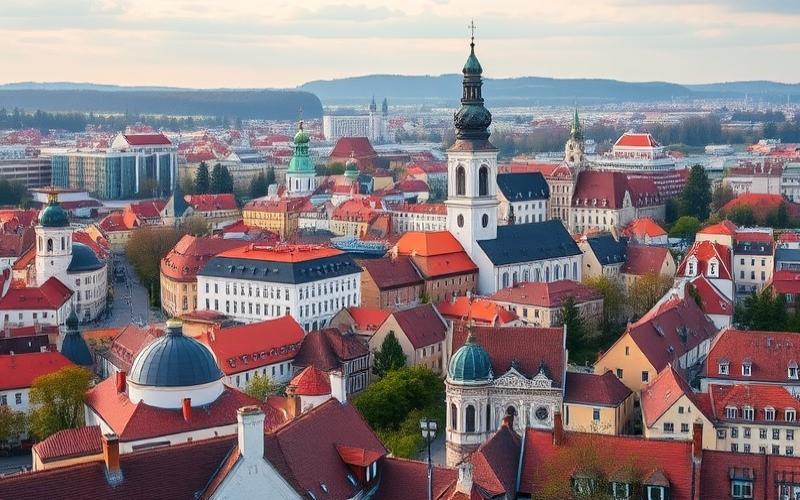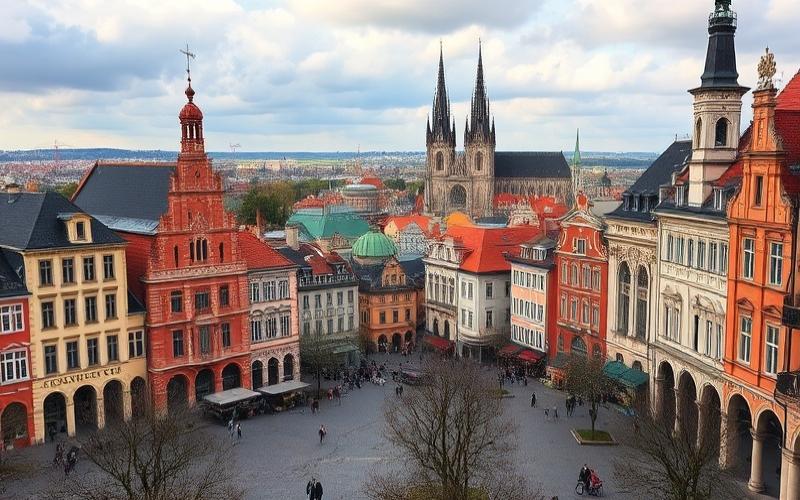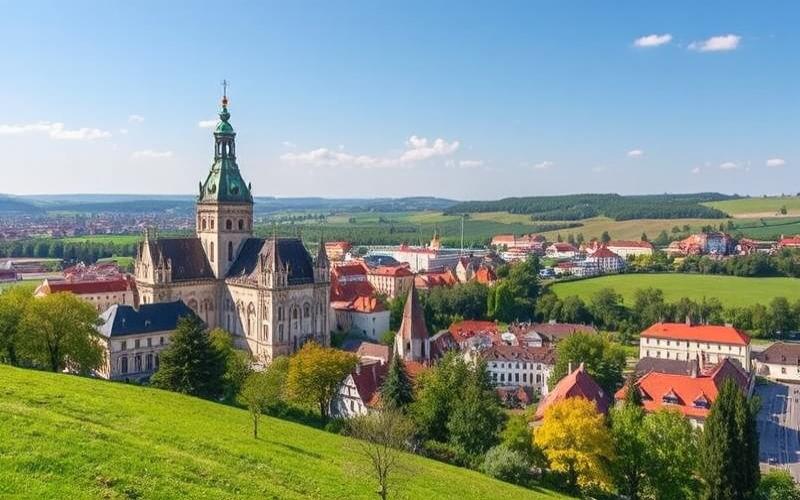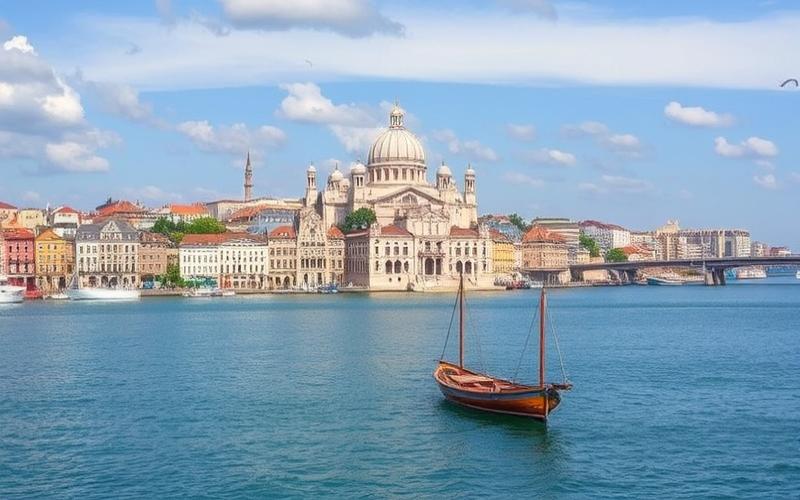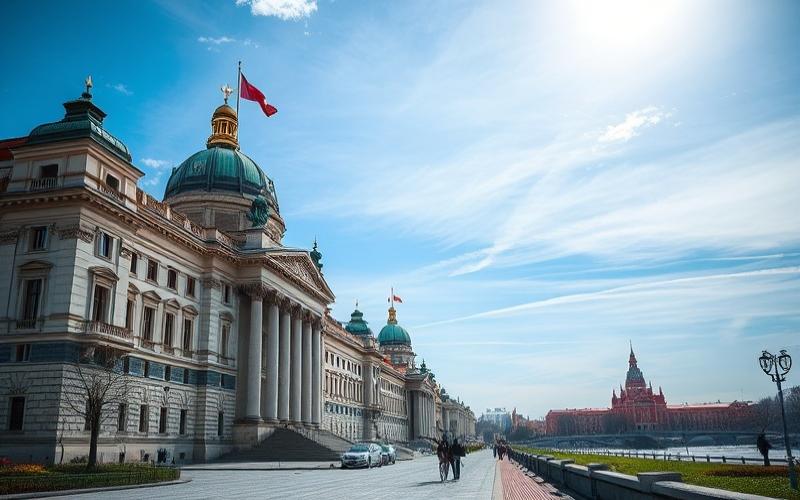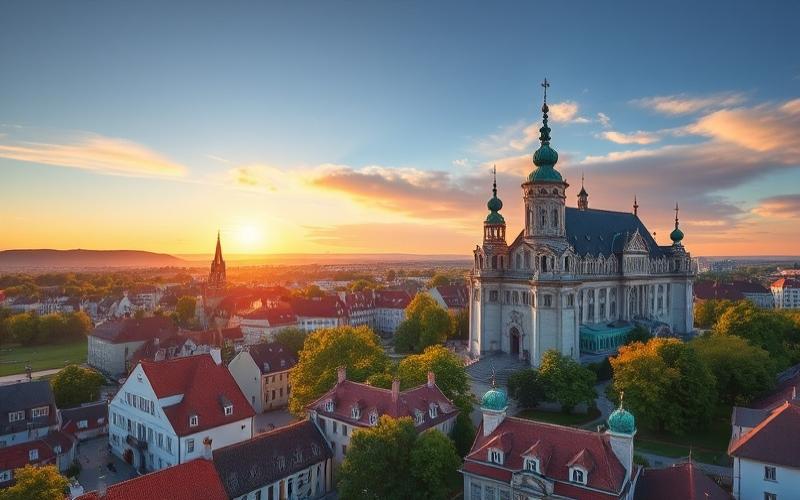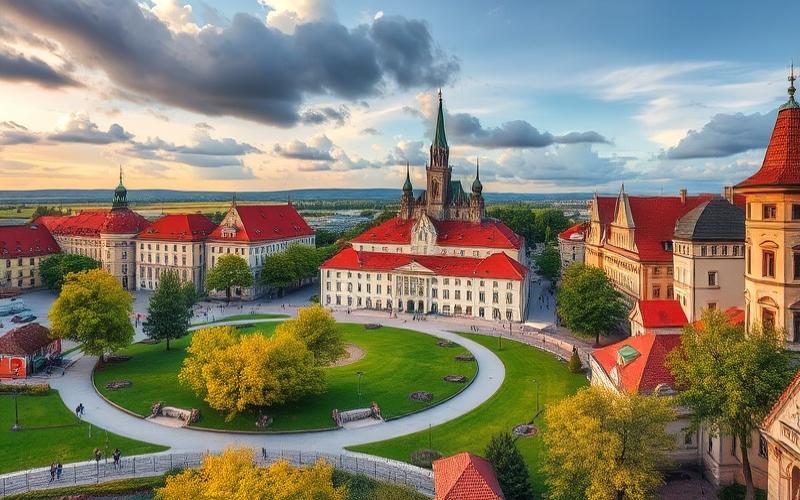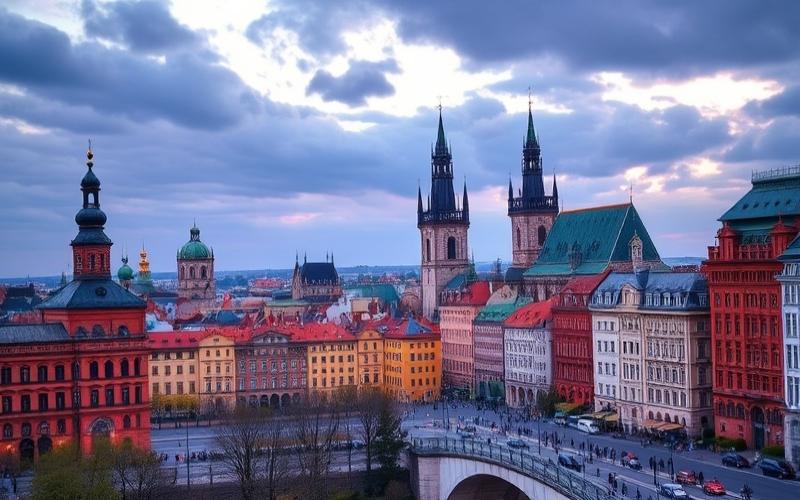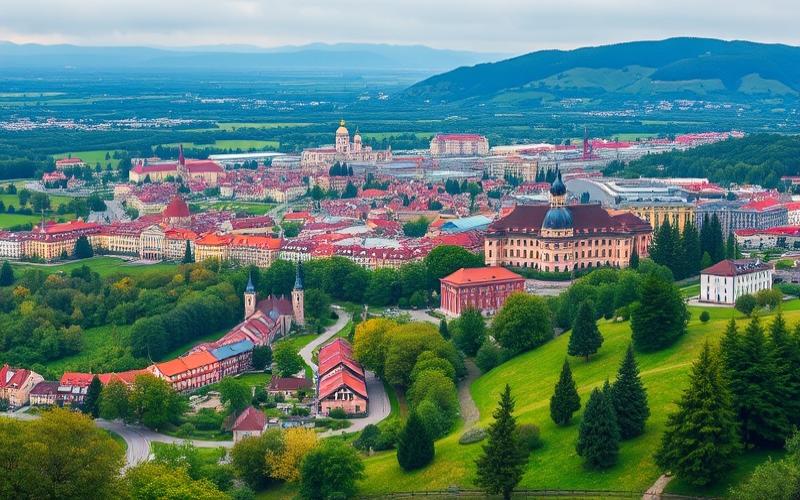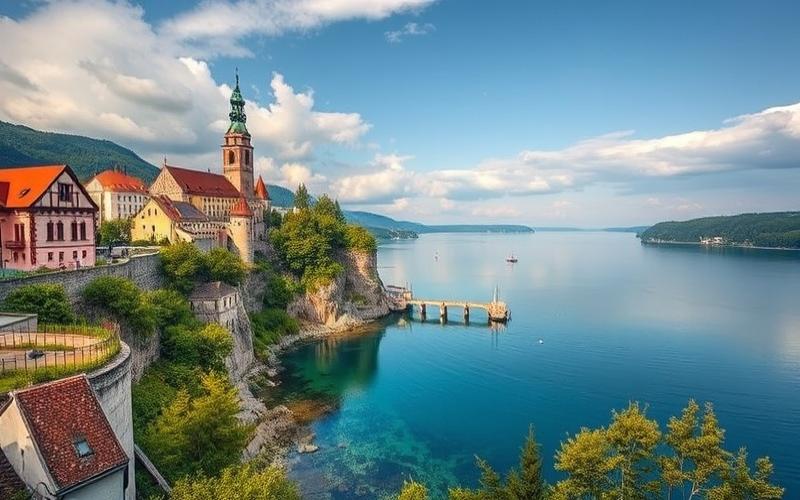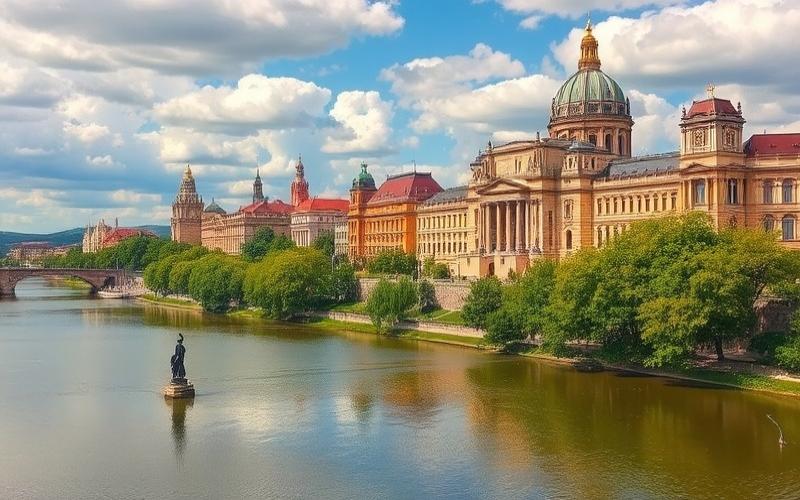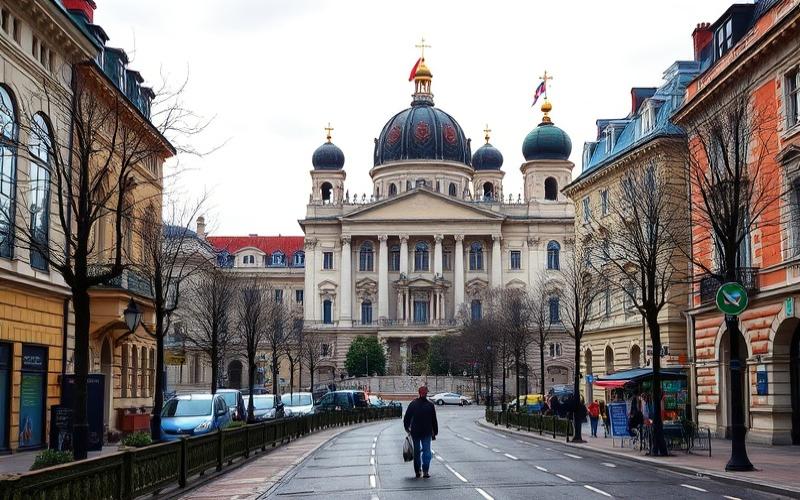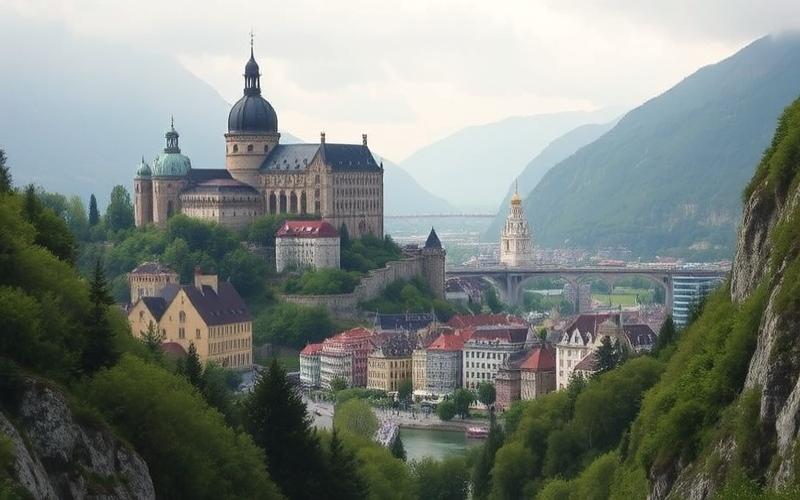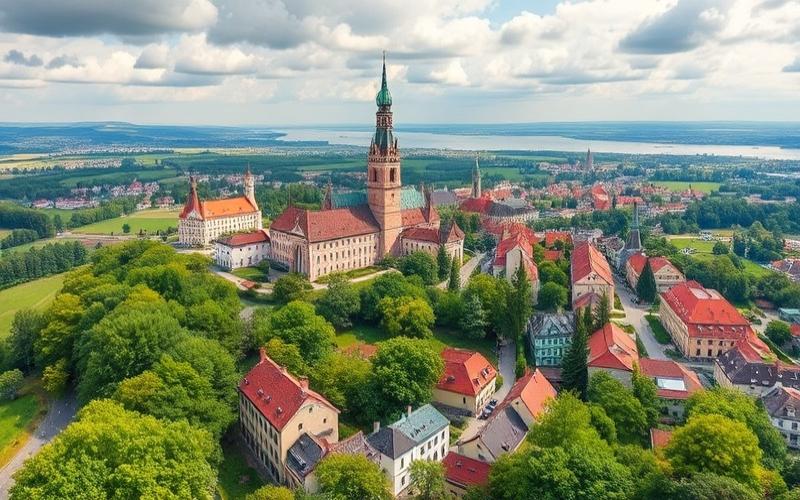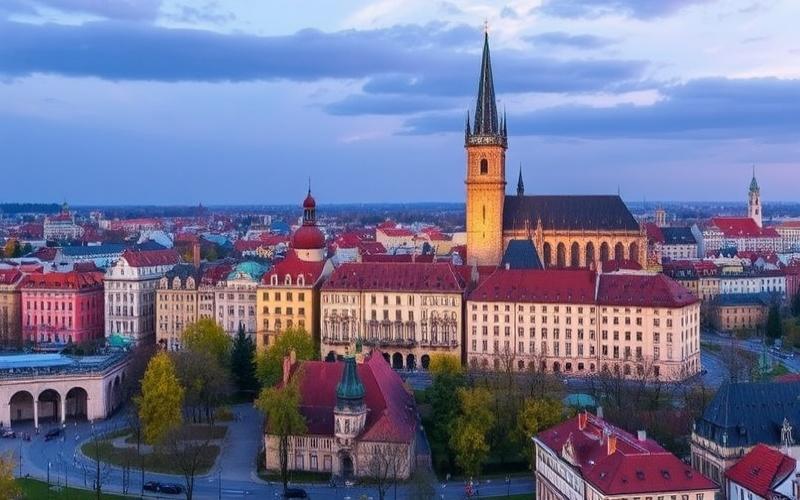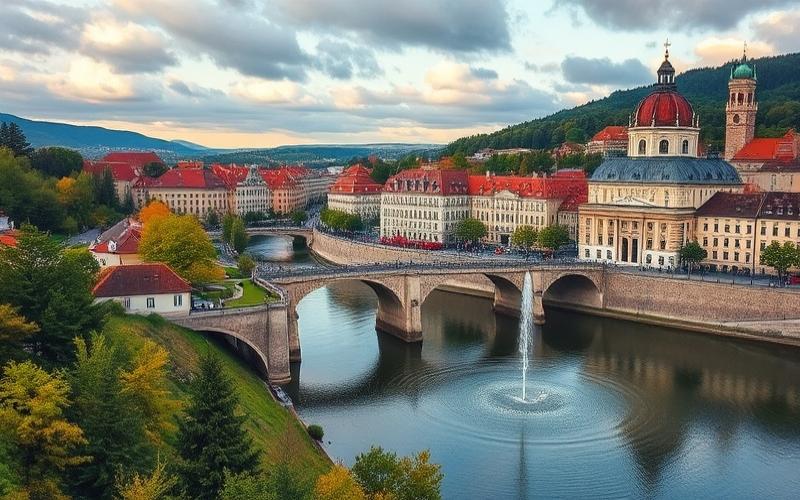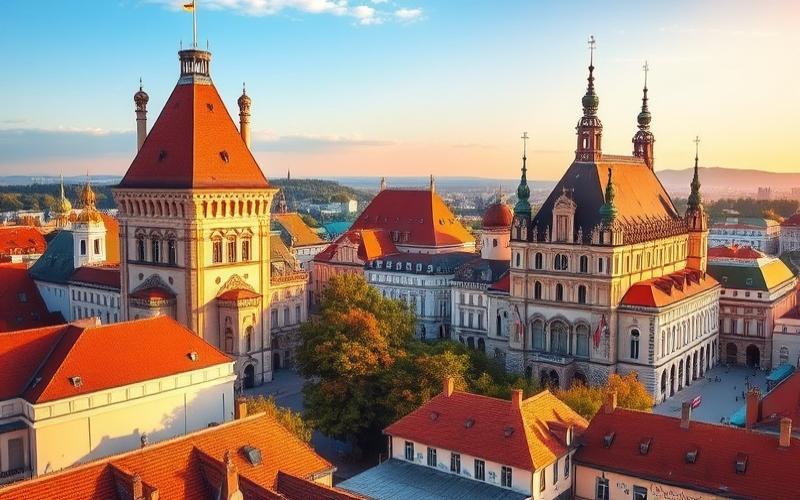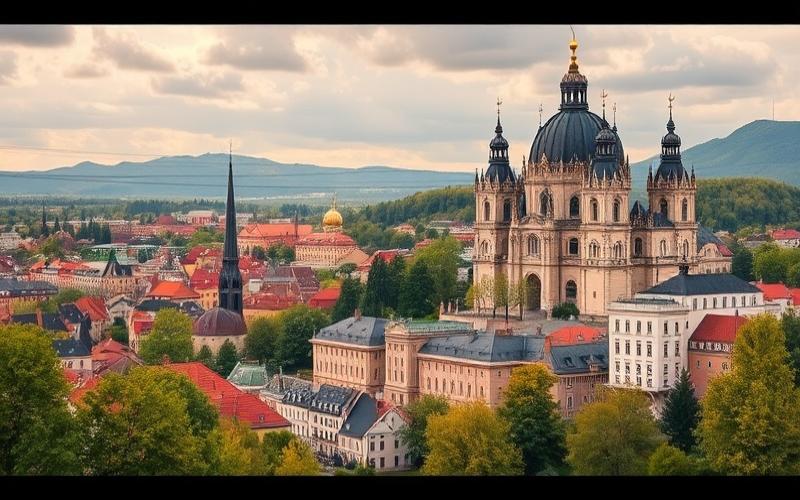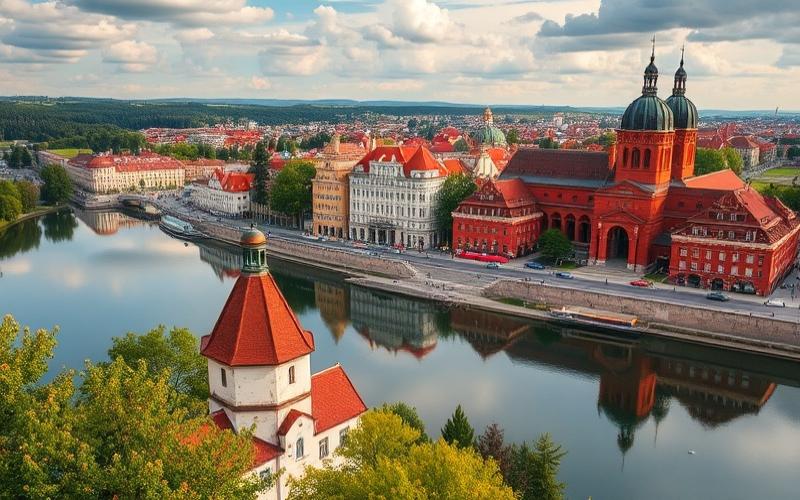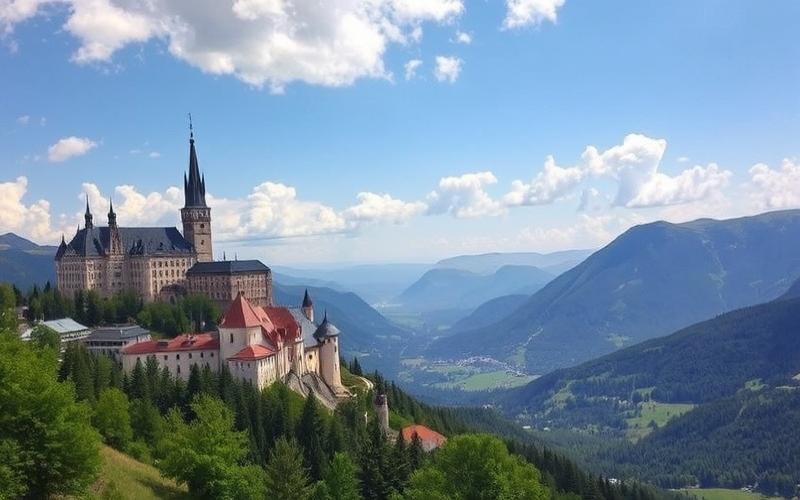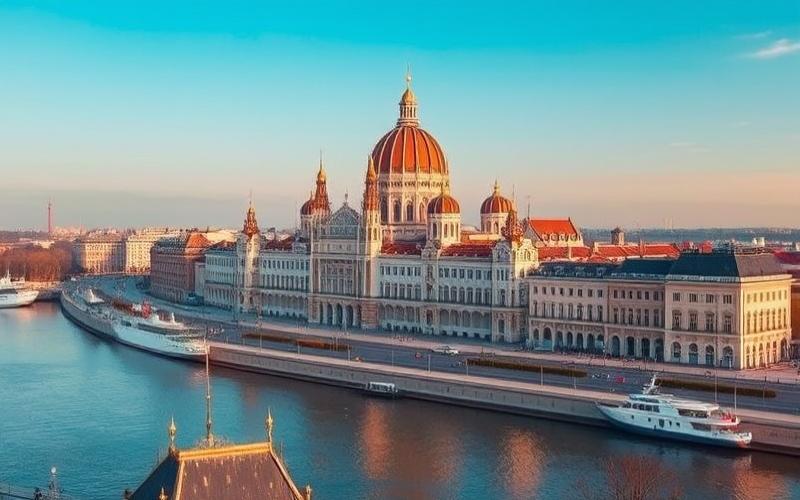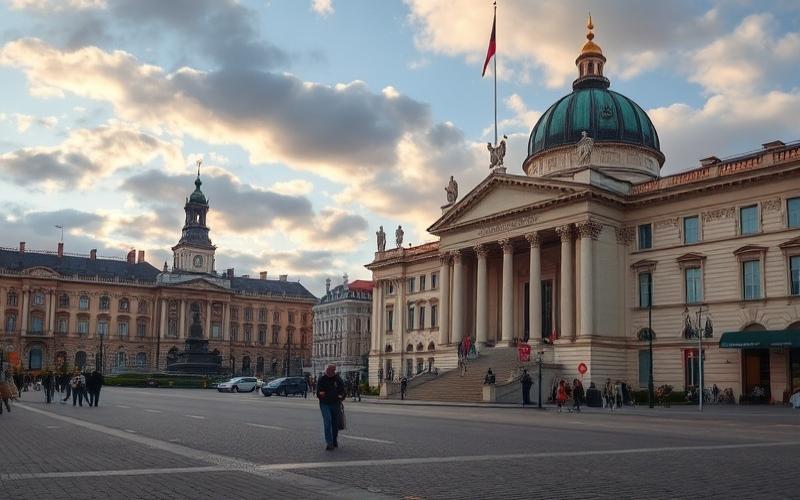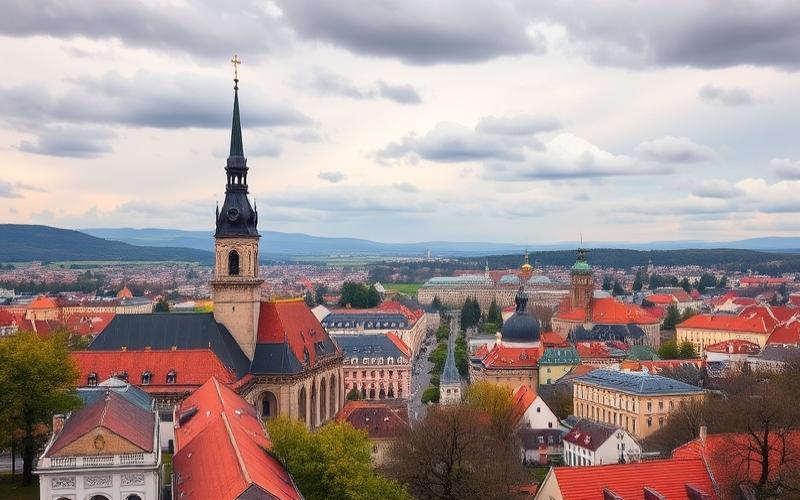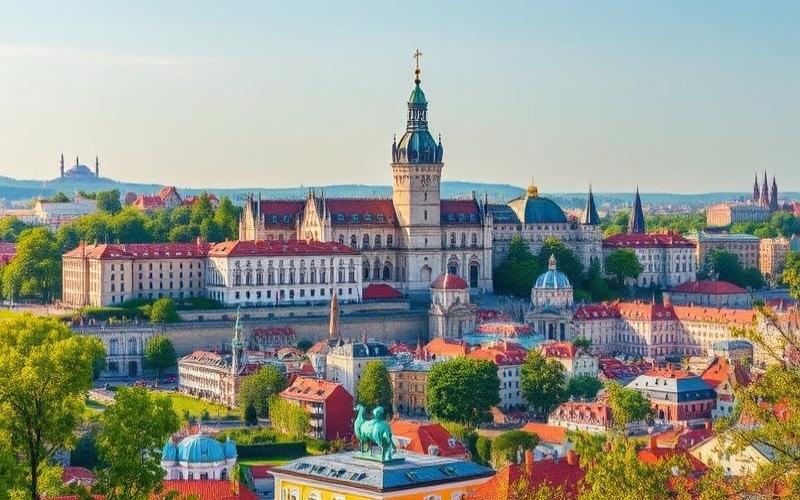
 Published on and written by Cyril Jarnias
Published on and written by Cyril Jarnias
Renovating a property in Poland can be a rewarding adventure, offering numerous opportunities to transform a space into a unique and personalized home. This process requires a clear understanding of local regulations, as well as careful planning to effectively manage budget and time.
Whether you want to modernize an old building or refurbish an apartment, it is essential to know the local suppliers, assess potential costs, and identify the challenges of the Polish market.
Before diving into the world of renovation, discover the tips and advice that will help you navigate this exciting venture while maximizing the value of your investment.
Benefits of Property Renovation in Poland
Economic Benefits of Property Renovation in Poland
- Increase in Property Value
Property renovation, especially in developing urban areas like Łódź or Krakow, allows for significant property appreciation. Conversion projects and infrastructure modernization generate an increase in price per square meter and enhance attractiveness for local and foreign investors.
| City | Average Price/m² (2025) | Examples of Value-Adding Operations |
|---|---|---|
| Krakow | ~€2,500 | Transformation of old buildings |
| Łódź | Variable | Manufaktura project, renovated Fabryczna station |
- Local Tax Incentives
- Low rental taxes: between 0% and 8.5%, depending on the type of asset held
- Full capital gains exemption after five years of property ownership
- Reduced notary/legal fees: between 1% and 3% of the acquisition price
Positive Environmental Impact
- Increasing use of sustainable materials (FSC-certified wood, bio-based insulation)
- Significant improvement in energy performance through:
- Replacement of windows with double/triple glazing
- Enhanced thermal insulation
- Installation of low-energy equipment (heat pumps, LEDs)
- Direct reduction of pollutant emissions and lasting decrease in energy costs
Examples of Incentive Government Programs
Non-exhaustive list:
- European funds for urban revitalization managed locally (collaboration between EIB and Polish regions)
- National grants for energy renovation (“Czyste Powietrze,” “Stop Smog” program)
- Investment aids for listed or protected heritage buildings
Improved Indoor Comfort
Modernization leads to:
- Better acoustic/thermal quality
- Electrical/plumbing installations up to current standards
- Easier adaptation to contemporary needs (home automation, accessibility for people with reduced mobility)
Preservation of Polish Architectural Heritage
Renovation allows:
Preserving historical character while meeting modern requirements.
- Conservation/restoration of old facades
- Discreet integration of contemporary technical equipment
- Strict compliance with heritage regulations during work
Thanks to this comprehensive approach, it is possible:
- To maintain local architectural identity,
- To offer a modern setting in line with European standards,
- To indirectly support cultural tourism by keeping the old urban fabric alive.
Good to Know:
Renovating a property in Poland offers many economic benefits, including increased property value and attractive local tax incentives. The use of sustainable materials and improved energy efficiency reduces the carbon footprint, contributing to a positive environmental impact. Government programs like the Energy Renovation Fund encourage modernization work, often offering grants or low-interest loans. Modernizing interior infrastructure improves daily living comfort while preserving Polish architectural heritage, thus harmonizing aesthetic traditions with contemporary standards.
The Essential Guide to Renovation Steps
Key Steps for Renovating a Property in Poland
- Initial Property Assessment
- Technical inspection to identify structural defects, outdated installations, and possible presence of asbestos or other hazardous materials.
- Analysis of architectural and historical potential and compliance with local plans.
- Obtaining Necessary Permits
- Verification of the local zoning plan. If the plan exists, the entire project must comply with it.
- In the absence of a local plan, preliminary submission of an environmental decision request if required, followed by a specific request called “zoning decision.”
- Submission and obtaining of the building permit from local authorities; in some cases, it may be necessary to obtain the opinion or authorization of the heritage conservator.
- Budget Planning
Item Detail Material Purchase Quality vs. cost Labor Qualified local professionals Architect/Engineer Fees Depending on complexity Taxes/Administrative Fees Approx. 3% of purchase price - Include a margin for unforeseen events (10–15%).
- Consider costs related to energy standards and thermal efficiency upgrades.
- Material Selection & Collaboration with Professionals
Advantages to prioritize:
- Select materials suited to the Polish climate while respecting traditional architectural style.
- Use solid wood or old bricks to preserve original charm; prefer modern double-glazed windows that mimic old-style designs.
- Collaborate with experienced local artisans in heritage restoration to ensure quality and compliance with legal requirements.
- Rigorous Schedule Management
Practical Tips:
- Establish a detailed backward schedule with intermediate steps validated in writing.
- Demolition/asbestos removal
- Structural work
- Technical networks (electricity/plumbing)
- Interior/exterior finishes
- Final inspection
- Organize regular meetings among all stakeholders to anticipate delays/logistical issues.
- Plan bulk orders/materials as soon as administrative approval is obtained to avoid stock shortages.
- Strict Compliance with Polish Regulations
To remember:
- All work must comply with:
- Polish Building Code (“Prawo budowlane”)
- Thermal/European standards if energy renovation
- Specific permits if the building is a listed historical monument
- Keep all written documentation: issued permits, intermediate technical reports, etc.
- All work must comply with:
- Preserving Traditional Style & Integrating Modern Comfort
Tips:
- Keep major architectural elements visible (moldings/high ceilings/old parquet floors).
- Install efficient central heating concealed under baseboards/discreet underflooring.
- Choose contemporary but understated sanitary/design equipment that fits the overall spirit.
- Finalization & Final Inspection
- Final checklist before handover:
- Complete site cleanup
- Testing of electrical/plumbing/heating installations
- Verification of compliance with initial plans/budgets
> Conduct a joint inspection with all trades present
> Obtain official validation from a certified expert/local authorities before occupancy
- Final checklist before handover:
Good to Know:
Initially assessing the property helps identify necessary work and understand local regulations, a crucial step before obtaining essential permits. Budgeting while considering Polish taxes and potential costs reduces financial surprises. Prioritize quality materials suited to the Polish climate and traditional architectural style, while integrating modern installations. Collaborating with qualified local professionals ensures compliance with Polish building norms and regulations. Schedule management and regular adjustments prevent delays and additional costs. Conduct regular inspections and a rigorous final check at the end of the renovation to ensure the project meets expected standards and personal satisfaction.
Always prioritize contract transparency when choosing service providers: detailed signed quotes, verified ten-year insurance, and clearly defined penalty clauses for delays!
Financing and Budgeting Your Project in Poland
Foreigners wishing to invest in real estate in Poland have several financing options but must meet strict criteria. Local banks mainly offer two types of mortgages: fixed or variable rate. It is also possible to use a property held in France as collateral to finance up to 70% of its value, via a mortgage backed by that property. To access a local loan in Poland, non-residents generally need to provide a significant down payment (30 to 50% of the property price), demonstrate stable and legally sourced income (ideally in Polish zloty), present a good credit history, and sometimes master the language or use a translator’s services.
Summary Table of Main Options
| Option | Specific Conditions | Required Down Payment | Particularities |
|---|---|---|---|
| Polish Mortgage | EU/non-EU residence with permit; proof of stable income; preliminary agreement | 30-50% | Strong application required |
| Mortgage on French Property | Real estate ownership in France | Up to 70% | Indirect financing possible |
| International Credit | Depending on bank/local legislation | Variable | Less common |
For non-EU/EEA/Swiss nationals, acquiring a home requires prior authorization from the competent Polish ministry and a valid residence card.
Average Renovation Costs
Average costs for renovating a property vary significantly by region (higher in major cities like Warsaw or Krakow) and the level of services chosen:
- Light Renovation: approx. 700–1,200 PLN/m²
- Standard Full Renovation: approx. 1,500–2,500 PLN/m²
- High Standard / High Norms: up to 3,000 PLN/m² or more
These rates do not always include certain additional fees such as architect or project manager, nor frequent unforeseen issues during old renovations.
List of Main Budget Items:
- Demolition/Removal
- Electricity/Plumbing/Heating
- Floor/Wall Coverings
- Interior/Exterior Joinery
- Fitted Kitchen/Bathroom
Be aware of significant regional differences between dynamic urban areas and the countryside.
Tax Incentives/Grants & Regulations
Some energy renovations benefit from local tax incentives (e.g., “ulga termomodernizacyjna”) allowing partial deduction of expenses from income tax. Grants may exist at the municipal level for eco-friendly projects or historical heritage.
It is mandatory to obtain certain permits before work – especially if structural modifications are planned – under penalty of a high fine. Regulations often depend on the type/region/age of the building.
List of Essential Procedures:
- Verification with the local urban planning office (“urząd miasta/gminy”)
- Possible permit application (“pozwolenie na budowę”)
- Official declaration for simple work
Practical Tips for Setting Your Budget
Key Points
- Always include an “unforeseen” margin equivalent to at least +10% of the total estimate.
- Rigorously select your contractors (check references/previous projects).
- Plan for architect/project manager fees if needed.
- Compare several detailed quotes item by item.
Essential Checklist:
- Overall budget including all additional fees (notary, local taxes, etc.)
- Appropriate construction site insurance
- Precise tracking with payment schedule
Concrete Example:
| Project | Surface Area | Renovation Type | Total Estimated Budget |
|---|---|---|---|
| Warsaw Apartment | 60 m² | Full Renovation | ~120,000 PLN |
| Krakow House | 100 m² | Standard + Extension | ~250,000–300,000 PLN |
In these examples, success relies on scrupulously respecting the initial budget, enriched from the start by a reserve for unexpected technical adjustments and careful selection of qualified service providers.
To maximize your chances of financial success in a property-renovation project in Poland: prioritize administrative/fiscal anticipation, increased budgetary prudence, and appropriate local professional support!
Good to Know:
To finance a renovation project in Poland, foreigners can apply for mortgages from local banks, although these often require proof of stable income and a significant initial contribution. The average cost of a renovation varies, with rates generally higher in major cities like Warsaw, influenced by local standards. There are tax incentives, such as tax reductions for energy improvements, and available grants that can ease the budget, but it is crucial to inquire about necessary permits to avoid costly penalties. Establishing a realistic budget involves planning for unforeseen costs, ensuring work with reliable contractors to avoid financial overruns. For example, renovating an apartment in Gdansk cost 1500 PLN per square meter including a 10% financial buffer, proving the effectiveness of careful planning.
Choosing the Right Materials for a Profitable Investment
In Poland, the most commonly used local materials in construction are wood, brick, and concrete. Each offers long-term financial benefits, including increased durability and reduced maintenance costs.
| Material | Long-Term Financial Benefits | Adaptation to Polish Climate |
|---|---|---|
| Wood | Good thermal insulation, renewable, moderate maintenance if treated correctly, increasing ecological property value | Ideal for insulation against cold winters; requires treatment against moisture |
| Brick | Low maintenance needs, excellent thermal inertia (reduces energy costs), long lifespan | Resistant to temperature variations; very suited to the Polish continental climate |
| Concrete | Competitive initial cost for high robustness and low long-term maintenance | Excellent resistance to freeze/thaw cycles common in Poland |
Environmentally Friendly Materials
- FSC or PEFC certified wood is preferred for its low carbon impact and ability to store CO₂.
- Locally manufactured bricks with low-emission processes or from recycling are also recommended.
- The increasing use of innovative materials like bamboo or cork offers interesting ecological potential: these solutions help improve insulation while increasing the green value of the property.
Positive impacts on value:
A property using eco-friendly materials often benefits from better attractiveness in the rental market or upon resale due to ESG (environmental, social, and governance) criteria. Demand for this type of property is constantly growing.
Value for Money
- Wood: Excellent value for money especially when purchased locally. It allows for quick and flexible construction but requires periodic maintenance.
- Brick: Slightly higher initial investment but compensated by extreme longevity.
- Concrete: Often used in foundations or load-bearing structures; it offers strength without prohibitive cost.
Tips According to the Polish Climate
- Prioritize high-performance insulation (local mineral wool) and double/triple glazed windows produced in Poland to optimize energy efficiency.
- Ensure all chosen materials resist frequent freeze/thaw cycles well.
Practical Recommendations
- Buying from local suppliers significantly reduces logistics costs while minimizing your carbon footprint.
- Supporting the regional economy also strengthens your relationships with qualified local artisans who know national climate requirements perfectly.
Influential Polish Standards
The PN-B (Polska Norma Budowlana) standards impose certain standards regarding:
- Mechanical resistance
- Minimum thermal insulation
- Environmental performance according to European regulations
It is essential that all your choices comply with these prescriptions to obtain local ten-year insurance and optimal bank financing.
To remember:
To optimize your real estate investment in Poland, always prioritize local materials suited to the national climate and meeting Polish standards – this guarantees sustainable profitability AND future property value appreciation.
Good to Know:
In Poland, choosing local materials like wood, brick, and concrete can significantly improve the profitability of a real estate investment, these materials offering durability and transport savings. Polish wood, for example, not only meets environmental standards but also adapts well to the continental climate, providing good thermal insulation. Local bricks, popular for their longevity and low maintenance, increase a property’s perceived value, while concrete is prized for its robustness against climatic rigors. To maximize financial benefits, it is advisable to buy directly from Polish producers, as this supports the local economy and complies with current construction standards. Preferring options like ecological insulation or recycled materials can also boost resale value while projecting a responsible image.
Disclaimer: The information provided on this website is for informational purposes only and does not constitute financial, legal, or professional advice. We encourage you to consult qualified experts before making any investment, real estate, or expatriation decisions. Although we strive to maintain up-to-date and accurate information, we do not guarantee the completeness, accuracy, or timeliness of the proposed content. As investment and expatriation involve risks, we disclaim any liability for potential losses or damages arising from the use of this site. Your use of this site confirms your acceptance of these terms and your understanding of the associated risks.

